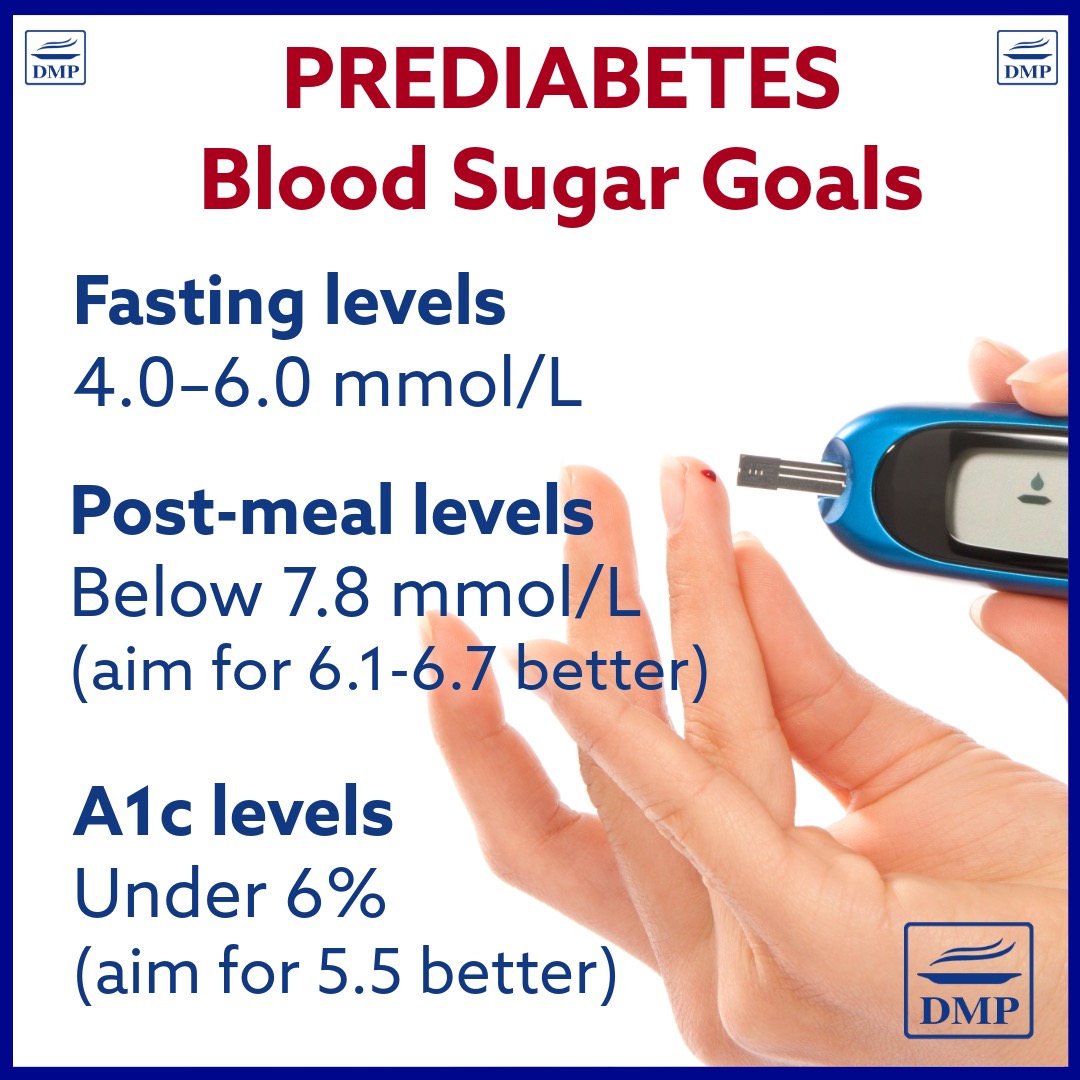If you’ve been told you have prediabetes, you might be feeling confused about what your blood sugar levels really mean—and what’s considered normal or too high here in Australia.
Let’s walk through the key numbers used to diagnose prediabetes, explain how they’re measured, and give you a helpful chart to better understand where your blood sugar sits, and what blood sugar goals to aim for too.
Understanding Blood Sugar Levels in Australia
In Australia, blood sugar (also called blood glucose) is measured in millimoles per litre (mmol/L). You’ll see this used in your pathology results, whether it’s a fasting test, HbA1c, or oral glucose tolerance test (OGTT).
When someone is diagnosed with prediabetes, it means their blood sugar is higher than normal, but not yet in the type 2 diabetes range.
It’s a critical warning sign—but also a powerful opportunity. With the right nutrition and lifestyle changes, it is entirely possible to bring your blood sugar levels back to a normal range and avoid progression to type 2 diabetes.
Prediabetes Blood Sugar Ranges
There are three main tests used to diagnose prediabetes in Australia:
- Fasting Blood Glucose Test (FBG)
- HbA1c Test (average blood sugar over the past 2–3 months)
- Oral Glucose Tolerance Test (OGTT)
Here’s a helpful chart that outlines the normal ranges and the official diagnostic ranges used in Australia:
| Test | Normal | Prediabetes (Impaired) | Diabetes |
|---|---|---|---|
| Fasting Blood Glucose | < 6.0 mmol/L | 6.1 – 6.9 mmol/L (Impaired fasting glucose) | ≥ 7.0 mmol/L |
| 2-hr OGTT (75g glucose) | < 7.8 mmol/L | 7.8 – 11.0 mmol/L (Impaired glucose tolerance) | ≥ 11.1 mmol/L |
| HbA1c | < 6.0% (42 mmol/mol) | 6.0 – 6.4% (42 – 47 mmol/mol) | ≥ 6.5% (48 mmol/mol) |
| Postprandial (after-meal) Glucose | < 7.8 mmol/L | Aim for normal < 7.8 mmol/L | Aim for normal < 7.8 mmol/L |
As you can see from the chart, if your fasting blood glucose or HbA1c test result was 6.3, you would be diagnosed with prediabetes.
Postprandial levels aren’t tested at pathology, but are often tested at home using a glucose meter. For all diagnoses, the postprandial blood sugar goal is under 7.8 mmol/L 2-hours after meals.
Why These Numbers Matter
Knowing where you sit on this chart is important because prediabetes doesn’t usually cause symptoms—but it can silently damage your body over time if not addressed.
It increases your risk of developing type 2 diabetes, heart disease, fatty liver, and other metabolic conditions.
But here’s the good news: prediabetes is highly reversible, especially in the early stages. Even small improvements in food choices, activity levels, and body weight can make a big difference to your blood sugar numbers.
If you need more help with reversing prediabetes back to normal, see our Prediabetes Reset Program.
Prediabetes Blood Sugar Goals
If you’ve already been diagnosed with prediabetes, your goal is to get your fasting and HbA1c levels back to normal—that’s under 6.0 mmol/L for fasting blood sugar and under 6.0% for HbA1c.
Once you achieve a normal HbA1c, which for many people with prediabetes can happen within 4-6 months, it’s even better to set your HbA1c goal below 5.7%—aim for 5.5%!
The postprandial blood sugar goal is under 7.8 mmol/L 2-hours after meals. But with prediabetes, try to aim even lower—6.1 to 6.7—this will help you achieve lower HbA1c faster too.

How Often Should You Get Checked?
If you’ve been diagnosed with prediabetes, it’s generally recommended to get your blood sugar levels checked every 6 to 12 months, especially HbA1c levels. This allows you to monitor your progress and catch any signs of progression early.
Your healthcare provider may recommend testing more frequently if your levels are close to the diabetes threshold or if you have other risk factors like high blood pressure, high cholesterol, fatty liver or a family history of diabetes.
Taking Action: What You Can Do
If your levels fall in the prediabetes range—take it seriously—now is the time to act!
By being proactive with your health, you can get your blood sugar and metabolism back to normal so you can avoid a type 2 diabetes diagnosis and potential complications that start developing during prediabetes.
Here are a few evidence-based strategies that can help you lower your blood sugar and improve your health:
- Reduce added sugars and refined carbohydrates
Focus on nutrient-dense, low-glycaemic foods that help stabilise blood sugar and limit processed and packaged foods. - Minimise high carbohydrate foods
Foods like potatoes, rice, pasta, noodles and bread spike blood sugar so it is best to avoid or monitor portions. - Incorporate regular movement
Even walking for 20–30 minutes a day can improve insulin sensitivity and metabolism. Resistance training is even more beneficial. - Monitor your blood sugar at home
A simple glucose meter can provide insights into how your body responds to different foods. Even if your GP doesn’t recommend it, they are not overly expensive and can really help you understand your blood sugar better. - Get support
Take our clinically proven nutrition program and get the right guidance that can make all the difference!
Final Thoughts
Having prediabetes doesn’t mean you’re destined to develop type 2 diabetes. In fact, it can be the wake-up call that puts you on a healthier, more empowered path.
Use the chart above to better understand your numbers—and let it guide you towards action, not fear.

Lower Blood Sugar, Lose Weight, Live Better — It All Starts Here
Join Dr. Jedha’s free bi-weekly eNews — discover Aussie supermarket finds, food swaps, and trusted blood sugar advice tailored to life in Australia.

